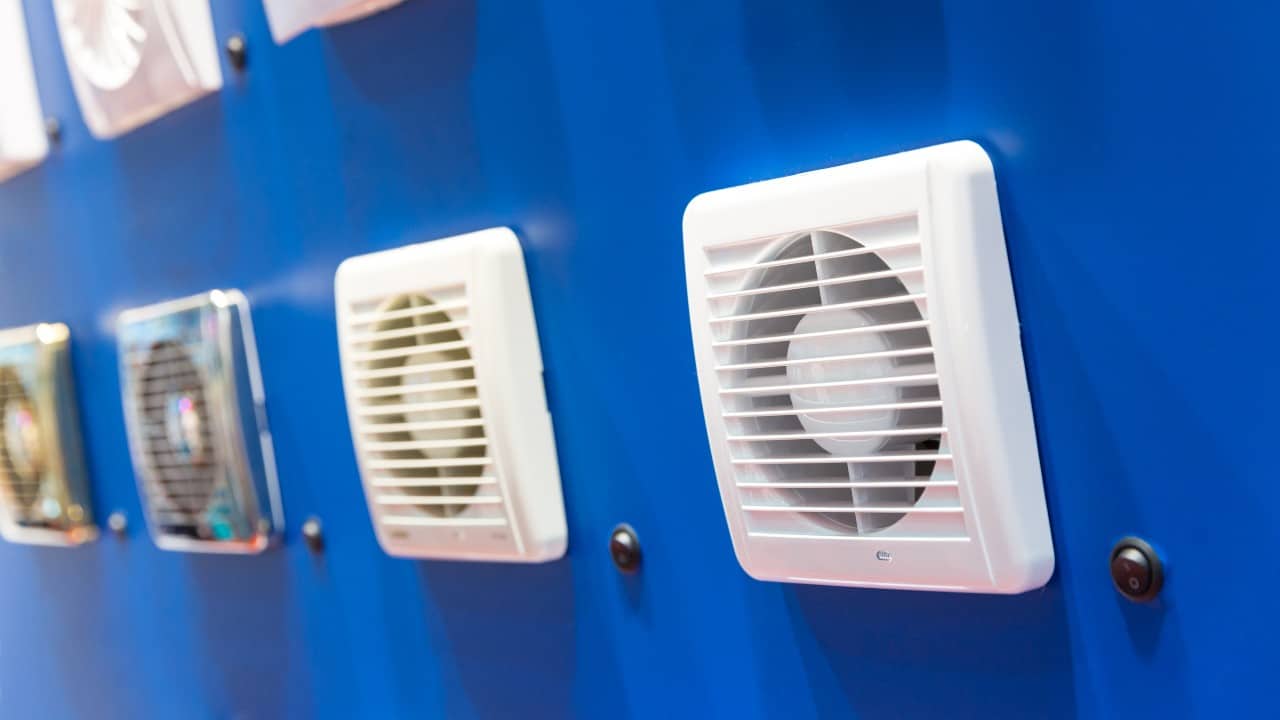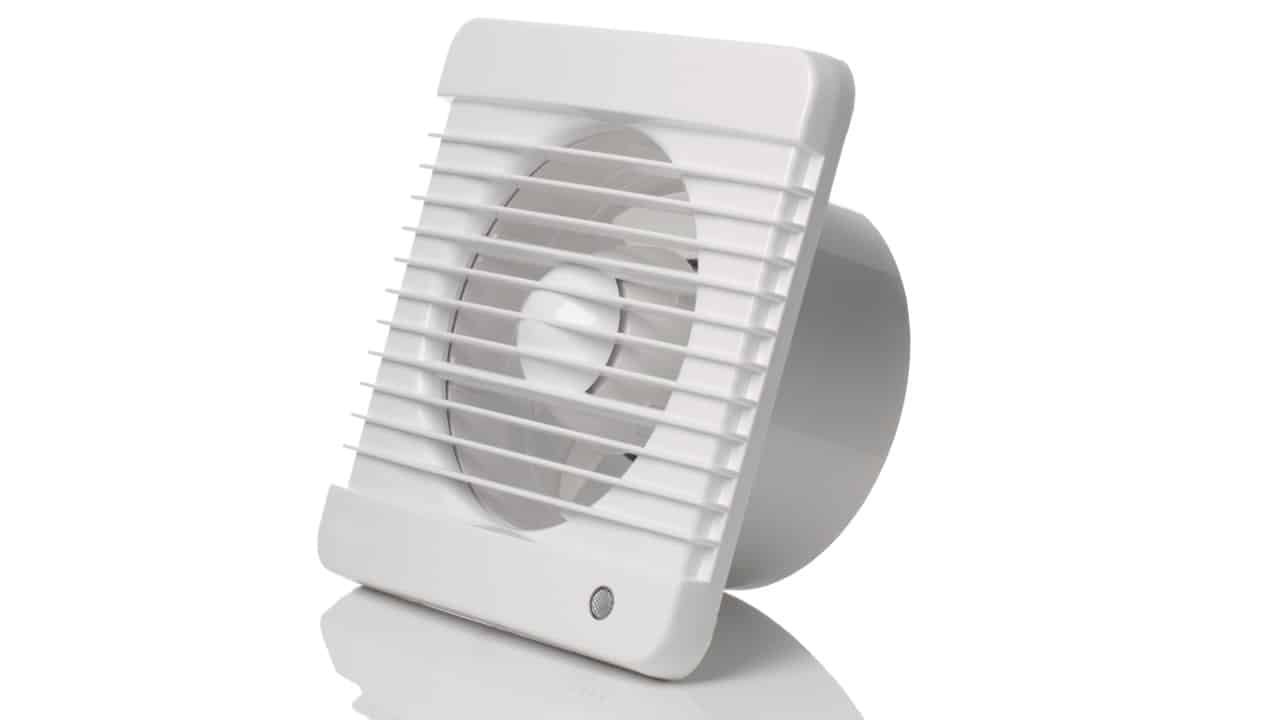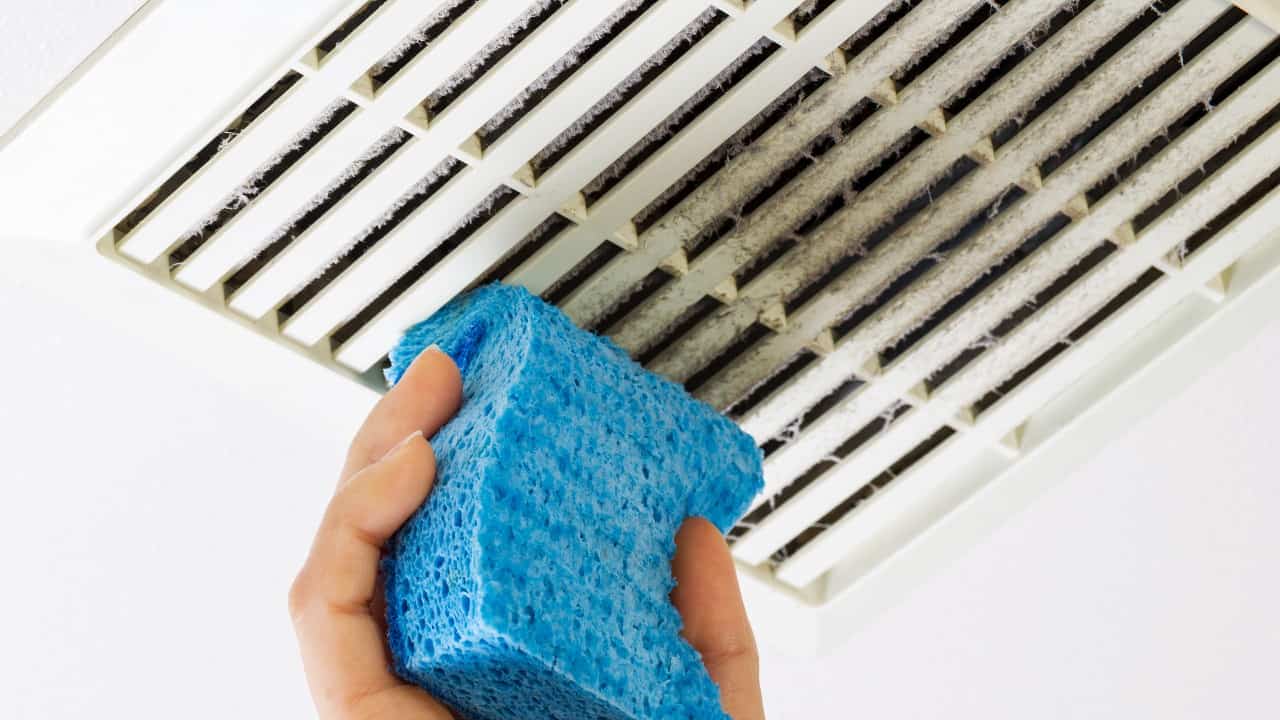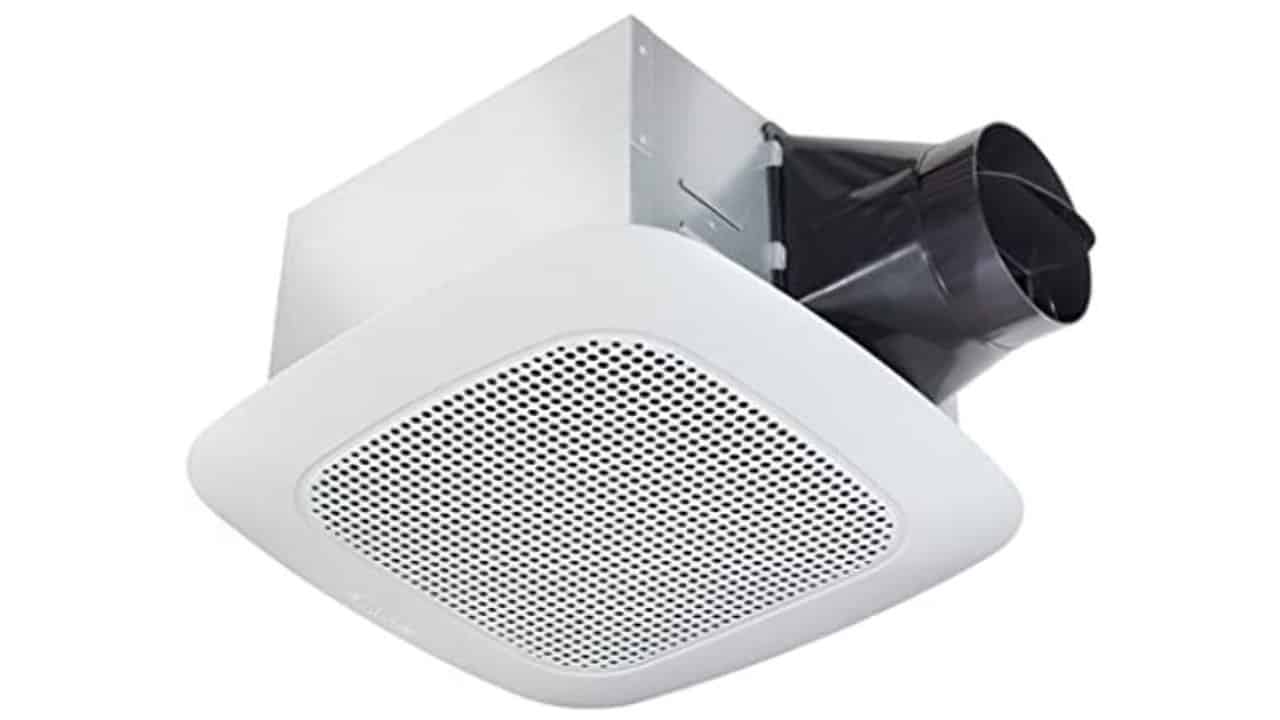Proper bathroom ventilation is more important than you might think. If there is too much moisture in your bathroom, you might end up with mold spores that can lead to rot and structural damage to your home. To avoid all those problems, you need to set up proper ventilation in your bathroom and get a bathroom fan that suits your needs. It must be powerful enough to get the job done while not being too loud.
To learn about different noise levels, you should know what bathroom fan sones are, what they measure, and why that is important. Keep reading to find out more.
Contents
What Are Sones?

Most household appliances make some noise – your fridge, dishwasher, laundry washer, TV, and more. The same goes for your bathroom fan.
Having a reasonably quiet bathroom fan can be very important, especially if you want your bathroom to be your oasis of peace and quiet. That is why you want your fans sone score to be as low as possible. You may find our post on the quietest exhaust fans useful as well.
A sone is a measure of the sound as the average listener registers it. Loudness is a subjective measure, unlike decibels which measure sound pressure levels. Also, unlike decibels, sones grow exponentially. This means that four sones are twice as loud as two sones while they are twice as loud as a single sone and so on.
What Are Sone Levels?
When getting a new bathroom fan, remember to check its “sone levels.”
Though a sone is a somewhat subjective measure, most authorities agree that one sone equals the amount of noise a refrigerator makes while quietly humming in a silent room. Conversely, two sones equal the noise that two fridges would make, etc.
To put it differently, two sones are the typical office space’s noise level, while a normal conversation is roughly three sones loud. Since this unit grows exponentially, five sones are as loud as a restaurant during peak hours, while most people turn the volume on their TV sets up to four. Finally, loud people on a sports match at a stadium or in an arena make noise that is approximately equal to six sones.
This is all you need to know since bathroom fans can be as quiet as 0.3 sones or as loud as six sones.
What Does Sone Rating Mean for a Bathroom Fan?
Remember what you just read about the difference between decibels and sones? Decibels measure physical sound, but there is more to it for us humans. The way we perceive sound depends on the pitch or frequency of the sound as much as it does on any other factor.
Lower frequencies seem quieter to us than the high frequencies do. Sones as a measure take this into account, so a lower sone rating means that a fan will seem softer to us while a higher sone rating is something that you will want to avoid.
A bathroom fan that scores between 0.3 and 1 scone is considered perfectly quiet. Remember that the lowest possible score is approximately as loud as leaves rustling on the ground, so there is no need to pursue such a model unless you are highly sensitive to noise.
Everything below three sones is considered average. But if your bathroom fan scores four sones or more, it can be regarded as (too) loud.
Older fans tend to be louder while modern fans have a sone rating that goes up to three sones.
Should You Care About Bathroom Fan Sones?
As long as you are not too sensitive to noise, there is no need to go through the trouble of obtaining an extremely quiet bathroom fan.
For instance, some two-sones fans are ten times less expensive than those with a 0.3 sones rating. The higher rating merely means that you will know when your fan is turned on in real life. Most likely, you won’t even be able to hear a fan this loud through closed doors.
An average fan with a 2.0 rating is strong enough to properly vent a bathroom that is 70 square feet or less.
One more instance when you should care about the loudness level of your fan is if you have an old unit that makes very little noise or no noise at all. A fan that is old and quiet is most likely broken. To test this, grab a piece of toilet paper and put it close to the fan. If the paper sticks to it, congrats – your fan still works.
CFM and Sones – A Relation You Should Know About
You don’t want your bathroom fans just to be quiet – you want it to be powerful too. That is where another critical unit of measure comes in. CFM or cubic feet per minute measurements show how quickly your fan exhausts and moves air. For example, a 100 CFM rated fan can move one hundred cubic feet of air in one minute.
The lowest-rated fan is 50 CFM, which should be enough for a smaller bathroom, while an average bathroom demands a fan between 75-100 CFM strong.
If the CFM is too high, your bathroom fan will be too loud, while a too low score means that your bathroom won’t be adequately ventilated.
You will want CFM to match your bathroom’s square footage as a general rule. For example, if your bathroom is nine feet wide and five feet long, you will want a fan with a CFM score of 45 or more.
If your ceiling is exceptionally tall, this is one more factor to consider. Since there is more vertical space, you will need a more robust fan. Also, if your bathroom is particularly huge – larger than one hundred feet – add 50 CFM after you calculate the square footage.
Alternatively, you can add 50 CFM for every appliance – a bathtub, a toilet, or a shower. For a jacuzzi, you will have to add 100 CFM.
Whatever you do, you should not try to manipulate numbers by obtaining a fan with a too low CFM just to get a lower sone rating. For more information, see our post on how bathroom exhaust fans work.
Ways To Soundproof Your Bathroom

There are some fans at the market that can run at a slower speed. While this will decrease the noise level, the fan will also make it less effective. However, this doesn’t mean you do not have any bathroom exhaust venting options to make your bathroom quieter.
To make your bathroom less noisy, you should put materials that absorb the sounds.
For instance, you could put cork flooring tiles on your bathroom floor. These will reduce noise levels and won’t be harmed by the moisture and humidity of your bathroom.
You can also install a sound-blocking door sweep. You should also seal the bathroom door with weather stripping for better insulation and soundproofing of your bathroom.
If the noise bothers you, consider getting a low-flow toilet. It will make less noise than a regular one and be better for the environment.
This brings us back to the bathroom fans – if a quiet bathroom is your number one priority consider keeping the fan on a separate switch, so it doesn’t automatically turn on when the light is turned on. That way, people won’t have to turn the fan on if they don’t want to. Check out this guide to bathroom fan switches for more information.
Alternatively, you can get one of those bathroom exhaust fans with Bluetooth speakers to mask the noise.
Other Things That Impact the Noise Level of a Bathroom Fan
Believe it or not, some other simple factors influence the amount of noise a bathroom fan makes. Here they are.
The bigger the venting is, the quieter the fan will be. Also, a fan that lies flush on the wall will make less noise than an angled one. Lastly, screw fittings make less noise than nails.
Care and Maintenance

Taking care of your bathroom fan and ensuring it works properly is not that difficult.
To keep your fan running smoothly, keep it safe from dirt and dust build-up. Every once in a while, remove the faceplate and clean it with warm soapy water and a regular toothbrush. With the faceplate removed, clean the fan interior as well.
Switch the fan off when it is not used to prolong its life.
If your fan suddenly becomes noisy, that might be a sign that something is wrong with it. Likewise, if it takes longer than usual to start when you turn it on or makes strange noises, it might be another sign that something is wrong with it.
After all, a bathroom fan is just an appliance, and as such, it is prone to wear and tear. A bathroom fan that is not working properly is a potential safety hazard. Simply retire that old fan and replace that tired fan with a new – and ideally quieter bathroom fan. If you need help, check out our How to Vent a Bathroom Fan Through the Wall guide.



